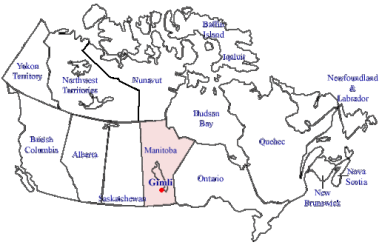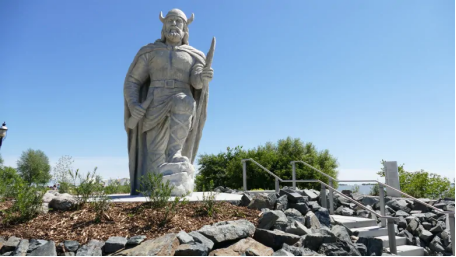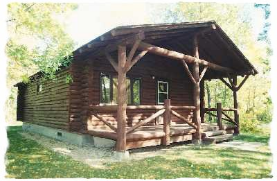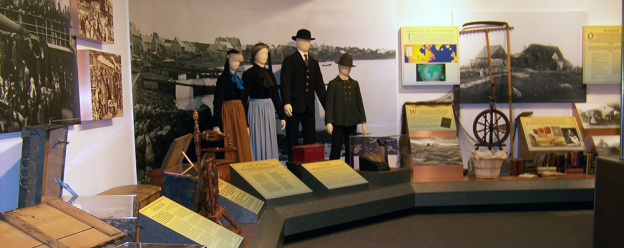Gimli, Manitoba 作者: 来源: 发布时间:2021-12-02
I.Population and Area
-Area
Land: 3.01 km2 (1.16 sq mi)
-Population (2016)
Total: 6,181
Density: 746.6/km2 (1,934/sq mi)

II.Natural Geography (environment and resources)
-Gimli is a community in the Rural Municipality of Gimli on the west side of Lake Winnipeg in Manitoba. The community's first European settlers were Icelanders who were part of the New Iceland settlement in Manitoba. The community maintains a strong connection to Iceland and Icelandic culture today, including the annual Icelandic Festival. It was incorporated as a village on March 6, 1908, and held town status between December 31, 1946, and January 1, 2003, when it amalgamated with the RM of Gimli. Census Canada now recognizes the community as a population centre for census purposes. The 2016 Canadian census recorded a population of 2,246 in the urban centre of Gimli.

-The town's settlers sustained themselves primarily from agriculture and fishing. Gimli maintains a strong connection to the lake today, tourism has played a part in the town's current economic sustainability. Gimli Beach is a popular spot in the summer while the Gimli Harbour is the largest harbour on Lake Winnipeg and in Western Canada between Ontario and the Pacific Coast.
-Transportation
The Gimli Airport is located in Gimli, MB, 45 minutes north of Winnipeg off PTH 8 and west on PR 231.
The airport is located in the Gimli Business Park, 6 kms west of the town site.
The airport has one of the province’s longest rural concrete runways at 6,800ft x 150ft.
The airport also has 3 taxiways and 2 aprons, runway lighting for night operations, and a VFR Airport with NDB Beacon.
There is an existing tower; however, it is only manned in the summer months by the Regional Gliding School cadets.
A terminal building with 24 hour year round access and a washroom is available.
The airport has recently installed a fuel system that provides AVGAS 100LL and Jet A1 Fuel available for purchase. There are no landing fees and there are 10 tie downs available.
The airport is open and maintained year round.
Located in the Business Park, there are many businesses, and a large dormitory owned by the RM of Gimli.
Adjacent to the airport, on a former runway, is a Motor Sports Park where drag racing, sports car racing, go karting, motorbikes, off road vehicles, and motocross bikes race.
It was on this runway that the famous "Gimli Glider” safely landed nearly 30 years ago. The "Gimli Glider” was an Air Canada Boeing 767 enroute from Montreal to Edmonton, ran out of fuel and had to make an emergency landing in Gimli.
Needless to say, the Gimli Airport can accommodate larger aircrafts
Airport Manager: Brian Renaud (431)641-3050
Website: http://www.gimli.ca/p/gimli-airport
III.ECONOMY
-The average Gimli salary in Canada is $58,500 per year or $30 per hour. Entry level positions start at $24,942 per year while most experienced workers make up to $99,450 per year.

-Website: https://neuvoo.ca/salary/?job=Gimli
IV.Industrial Characteristics
-Gimli is the site of the Crown Royal whiskey distillery. Daily production of Crown Royal uses 10,000 bushels of rye, corn and barley from Manitoba and surrounding provinces, and requires 750,000 imperial gallons (3,400,000 L; 900,000 US gal) of water naturally filtered through the limestone beneath the lake. The whisky produced at the Manitoba distillery is stored in 1.5 million barrels, located in 50 warehouses over 5 acres (2 ha) of land. The whisky is then blended and bottled in Amherstburg, Ontario.
V.Attractions
1.Giant Viking Statue (Gimli, RM of Gimli)

-A 4.6 metre (15 feet) fibreglass statue of a Viking in Gimli was created as a Canadian centennial project by the Gimli Chamber of Commerce. Designed by Gissur Eliasson of the University of Manitoba, it was constructed by sculptor George Barone at a cost of $15,000. It was unveiled in 1967 by then-President of Iceland Asgeir Asgeirsson. A new Viking Park around the statue was unveiled on 5 August 2017 in recognition of the Icelandic Festival of Manitoba’s 125th anniversary and in honour of Canada’s 150th birthday. Around the pathways are stelae of various Icelandic persons and families from the area.
-Address: 104 2 Ave, Gimli, MB R0C 1B0
-Website: https://www.tripadvisor.ca/Attraction_Review-g499162-d13276347-Reviews-Gimli_Viking_Statue-Gimli_Manitoba.html
2.Camp Morton Provincial Park

-Camp Morton Provincial Park is a provincial park located on the west shore of Lake Winnipeg in Manitoba, Canada about 6 kilometres (3.7 mi) north of Gimli. It is 250.23 hectares (0.9661 sq mi) in size. It was designated as a Provincial Park in 1974.
-The park is located in the Gimli eco-district within the Interlake Plain eco-region. This eco-region is part of the Boreal Plains eco-zone.
-Camp Morton, 8 km north of Gimli, is named after Monsignor Thomas W. Morton who developed the area in 1920 as a summer camp for orphaned and under privileged children.
-Monsignor Morton arrived from England to become rector of St. Mary's Cathedral of Winnipeg in 1919. He devoted much of his time, funds and energy to establish the children's camp with its ornate buildings and gardens. Many children spent a week of their summer holidays in camp, the boys in July and the girls in August. The camp was so well known, the near by community of Faxa became known as Camp Morton.
-Website: https://www.gov.mb.ca/sd/parks/park-maps-and-locations/central/camp_morton.html
3.The New Iceland Heritage Museum

-The New Iceland Heritage Museum (NIHM) greets visitors from around the world year round, seven days a week, at its main multi-media location in the The Waterfront Centre.
-Through the presentation of dynamic permanent exhibits, temporary and traveling exhibits, and through a variety of workshops, lectures and programs the New Iceland Heritage Museum (NIHM) strives to serve the public as a valuable community resource that meets the increasing needs of new audiences and that presents relevant topics and issues in a rapidly changing world.
-The museum’s mandate continues to be broad and includes interpreting the history and development of New Iceland; the natural history of Lake Winnipeg and its fishing industry; and to increase cultural awareness through permanent, temporary and traveling exhibits.
-Over the years, NIHM has forged many new partnerships to meet the increasing needs of its visitors. Approximately 15,000 visitors annually attend the various sites of the museum. The museum has received the honour of being designated a Manitoba Signature Museum by the Province of Manitoba. This designation is aimed at selected museums that showcase unique collections and have the potential to be significantly enhanced heritage tourism attractions.
-Guided Tours
You will experience the past as you explore key locations and icons along Gimli’s waterfront that tell the story of the arrival and settlement of the Icelandic settlers in Manitoba. Knowledgeable local guides will take you on a walking tour suited to the specific interests of your group.
Tours are conducted in English. French and Icelandic speaking tours are possible based on the availability of our bilingual volunteer guides.
Recommended time for group tours is one and a half to three hours.
Maximum size of group tour that we can accommodate is 50 – 60 people.
Guided Group Tours are $4.00 per person and can be customized to suit the needs and interests of groups.
Tours must be booked a minimum of one week in advance. Hours are the same as the NIHM daily hours of operation.
Sixty seat theatre is available with VHS, DVD and PowerPoint presentation capacity
-Address: #108 94-1st Avenue, Gimli, MB R0C 1B1
-Phone: 204-642-4001
-email: nihm@mts.net
-Website: https://nihm.ca/
VI.History
-The first European settlers in Gimli were Canadian Icelanders. Icelandic immigrants began settling the area in 1875. The Icelandic settlers arrived from Kinmount, Ontario, and settled at the site of Gimli, the new home of New Iceland. Volcanic eruptions in Iceland at the time spurred additional immigration to the Gimli and New Iceland area. 300 people left Iceland, arrived in Ontario and took a ship to Duluth, from there they made their way to Grand Forks, North Dakota and took a steamer up to the mouth of the Assinboine. 75-100 people stayed in the Winnipeg area while the rest made their way to Lake Winnipeg on flat boats and one York boat to save money.
-In 1875, the settlers landed south of Gimli at Willow Island and then had to walk and carry the remaining goods to the current site of Gimli. A second group of approximately 800 would follow in their footsteps the next year. Three town sites were chosen in New Iceland to be surveyed, Gimli was measured as approximately 1 mile of lakefront and half a mile in depth. Of the three towns, Gimli, Lundi, and Sandvik, Gimli is the only one remaining and the only one to have developed exactly as planned.
-The Canadian Pacific Railway reached Gimli in 1906 and soon the town and surrounding region became a tourist and vacation destination for people from Winnipeg. By the 1930s the south shore area of Gimli began to see cottages replacing farmland. With 68 km (42 mi) of shoreline on Lake Winnipeg, Gimli is a popular fishing destination in summer.
-During World War II an area west of the community was appropriated by the Royal Canadian Air Force to construct a training facility. RCAF Station Gimli was opened in 1943 and remained in operation until 1945. The Station was reactivated in 1950 and was closed again in 1971.
-In 1983, the Gimli Industrial Park Airport became famous when an Air Canada Boeing 767 ran out of fuel over southern Manitoba and successfully glided to a landing at Gimli Motorsport Park. The aircraft in that incident became known as the Gimli Glider.
-In 2006, Icelandic-Canadian poet David Arnason contributed a naturally washer-shaped "lucky stone" from the shores of Lake Winnipeg at Gimli to the Six String Nation project. The stone was inlaid on the seventh fret of Voyageur, the guitar at the heart of the project, by Sara Nasr.
VII.Other information
-GIMLI INDUSTRIAL BUSINESS PARK
Formerly Royal Canadian Air Force Base, the Gimli Business Park is located 2 miles west on PR 231 PTH 8 and 3 miles west of the town site.
The 1396 acre park is home to many private businesses and government departments, Training Centre, Airport, and lots available for sale for development.
Prime Commercial lots now available in:
Gimli Industrial Business Park
(lots starting at $8,000.00)
Please phone 204-642-6697 for more information
-Business Resources
-FREE Business Seminars
Free business seminars covering a wide variety of topics are held at Manitoba Agriculture, Food & Rual Initiatives (MAFRI) offices.
Seminars are delivered by the Canada/Manitoba Business Service Centre via video conferencing.
All sessions are free.
All sessions are tentative. Dates and times are subject to change.
-Free Business Planning Assistance
Community Futures East Interlake staff will assist you with the creation of your business plan. A great place to start is by filling out a business planning workbook.
-Free Resource Library
Community Futures East Interlake is a satellite office of the Canada/Manitoba Business Service Centre. There are resources available covering a variety of business topics.
-Free General Business Counseling
Community Futures East Interlake staff is pleased to provide you with any business counseling you may need. Do you need training is a specific aspect of your business? If so let us know, we may be able to help you access training.
-Website: http://www.gimli.ca/p/business-resources
VIII.Contact information
-Government
Mayor: Lynn Greenberg
MP: James Bezan (CPC)
-Rural Municipality of Gimli
P.O. Box 1246, 62 - 2nd Avenue Gimli, MB R0C 1B0
Phone: (204) 642-6650
Toll Free: (866) 642-6650
Fax: (204) 642-6660
E-mail: gimli@rmgimli.com
-Website: http://www.gimli.ca/p/contact-us
